A semi-detached house is two homes that share one common wall but have separate entrances and yards. Think of it as the middle ground between a townhouse and a standalone house. Many people get confused about what makes a home semi-detached versus other housing types.
Understanding this housing style matters more than ever. Semi-detached homes are becoming popular choices for first-time buyers and growing families. They offer more space than condos but cost less than detached houses.
This guide explains everything about semi-detached houses. You’ll learn the key features, benefits, and potential drawbacks. We’ll cover costs, maintenance responsibilities, and how they compare to other housing options.
Real estate professionals and current homeowners shared their experiences to give you accurate information. You’ll get clear answers about whether a semi-detached house fits your needs and budget. No confusing jargon or sales pressure – just practical facts to help you make smart housing decisions.
What Is a Semi-Detached House?
Core Definition
A semi-detached house is essentially half of a building designed for two families. You share one wall with your neighbor, but everything else belongs to you – your own front door, your own utilities, and usually your own yard space.
Picture two mirror-image homes built side by side as one structure. Each home functions completely independently. You control your own heating, electricity, and water. Most semi-detached houses also come with their own parking spaces and outdoor areas.
How It Differs from Other House Types
The key difference is that single shared wall. Detached houses stand alone with no shared walls at all. Townhouses typically share walls on both sides and connect to multiple units in a row.
Ownership structure also sets semi-detached homes apart. Unlike duplexes where one person might own both units and rent one out, semi-detached houses usually have separate owners for each half. You’re not sharing ownership with anyone – you own your half outright, just like you would a detached house.
This arrangement gives you more privacy than condos or apartments while keeping costs lower than fully detached homes.
Common Features of Semi-Detached Homes
Architectural Design
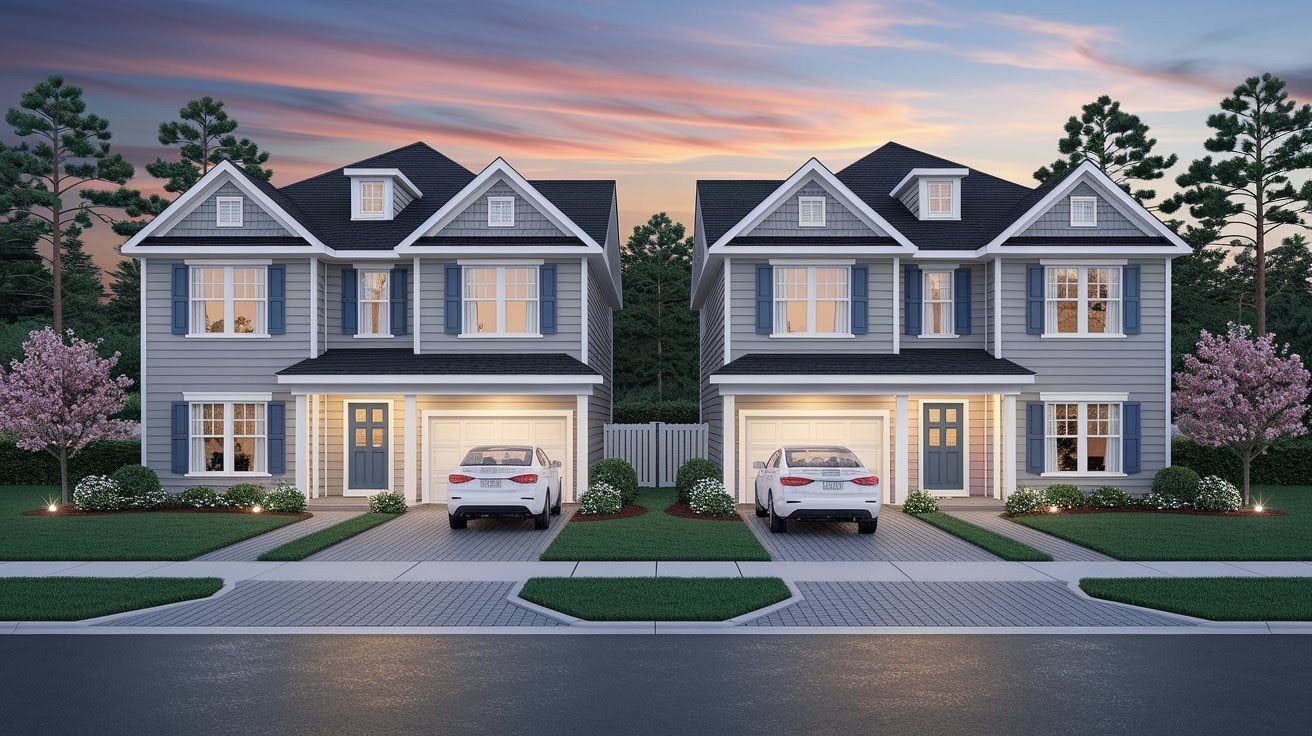
Most semi-detached houses look like mirror images of each other. The builder typically uses the same floor plan for both sides, just flipped around. This creates a balanced, symmetrical appearance from the street.
You’ll often see shared structural elements beyond just the wall. The roofline usually extends across both units as one continuous structure. Some properties share driveways or have driveways right next to each other, though each family gets their own parking space.
The exterior design usually matches between both sides – same siding, same window styles, and similar landscaping. This coordinated look helps maintain property values for both homeowners.
Ownership and Utility Setup
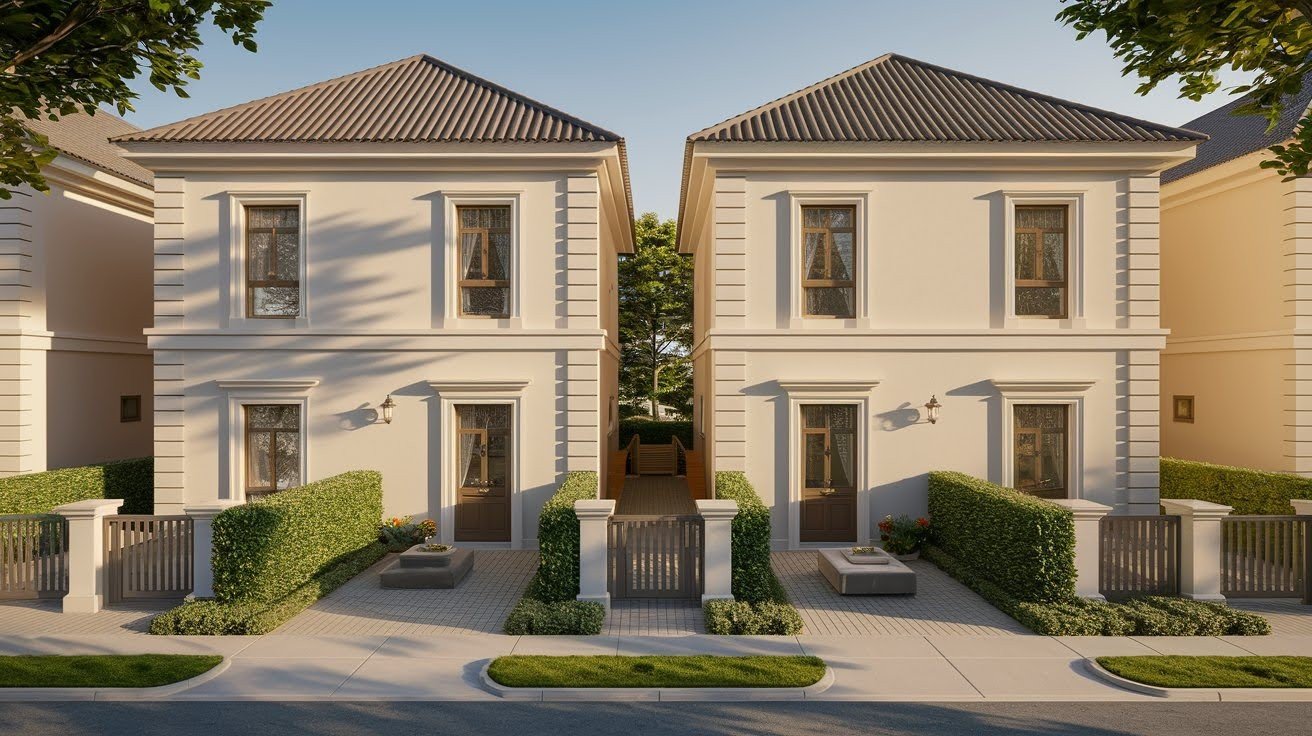
Each side of a semi-detached house typically has its own owner, just like regular single-family homes. You buy, sell, and maintain your half independently from your neighbor’s half.
Utilities are completely separate. You get your own electric meter, gas meter, and water connection. This means you only pay for what your family uses, not what your neighbors consume.
Each unit has its own private entrance – no sharing front doors or hallways. Outdoor space gets divided too, so you have your own yard area, patio, or garden space. The property line usually runs right down the middle of the building and lot.
Semi-Detached House vs. Other Housing Types
Semi-Detached vs. Detached Homes
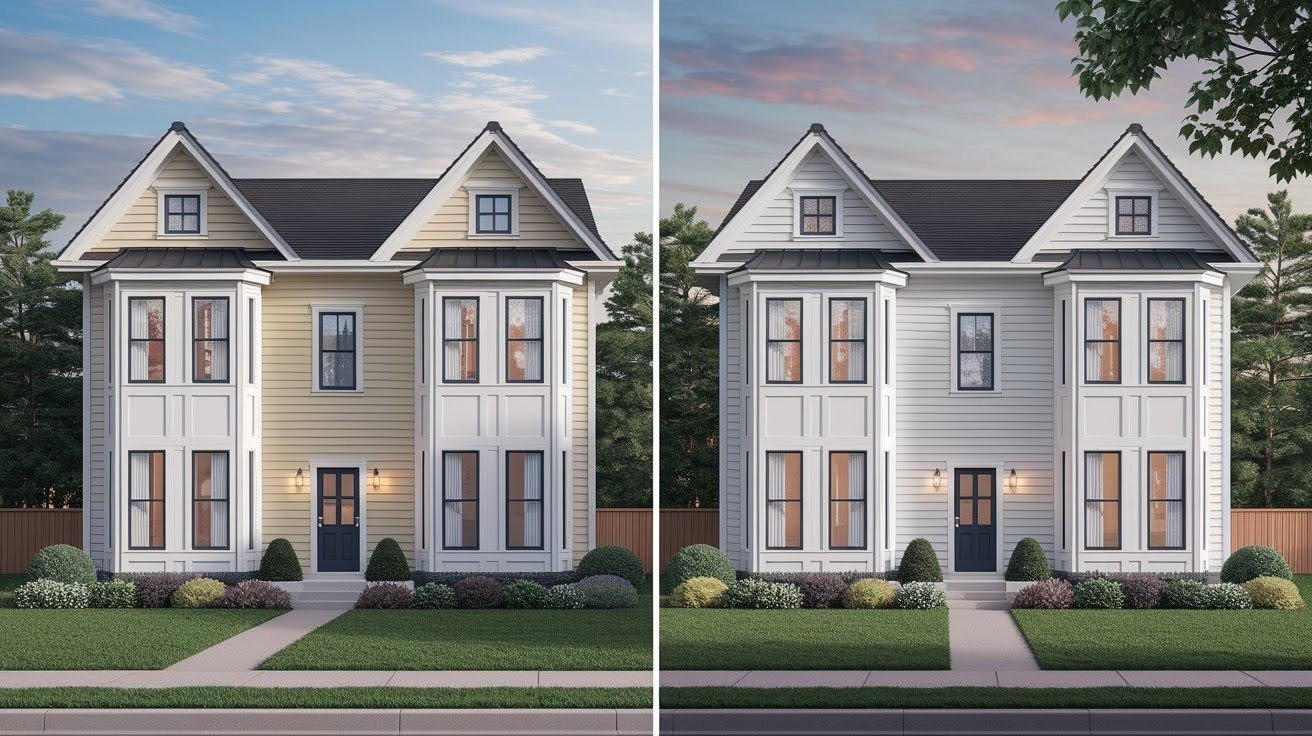
The main difference is that one shared wall. Detached homes stand completely alone with space on all sides, while semi-detached homes connect to one neighbor.
Privacy levels differ slightly – you might hear some noise through the shared wall, though modern construction minimizes this issue. Detached homes cost more but give you complete independence for renovations and exterior changes. Semi-detached homes offer similar space and yards at lower prices, but you may need neighbor approval for certain exterior modifications.
Design freedom is nearly the same for both types. You can renovate interiors as you wish, though exterior changes on semi-detached homes sometimes require coordination with your neighbor.
Semi-Detached vs. Duplexes

Duplexes often stack units vertically – one family upstairs, another downstairs. One person typically owns the entire building and rents out one or both units. Semi-detached homes sit side by side with separate owners and ground-level entrances for both families.
Ownership structure makes the biggest difference. With semi-detached homes, you own your half outright. With duplexes, you’re often a tenant unless you buy the whole building. Semi-detached homes also provide better privacy since you’re not sharing floors or ceilings.
Semi-Detached vs. Townhouses
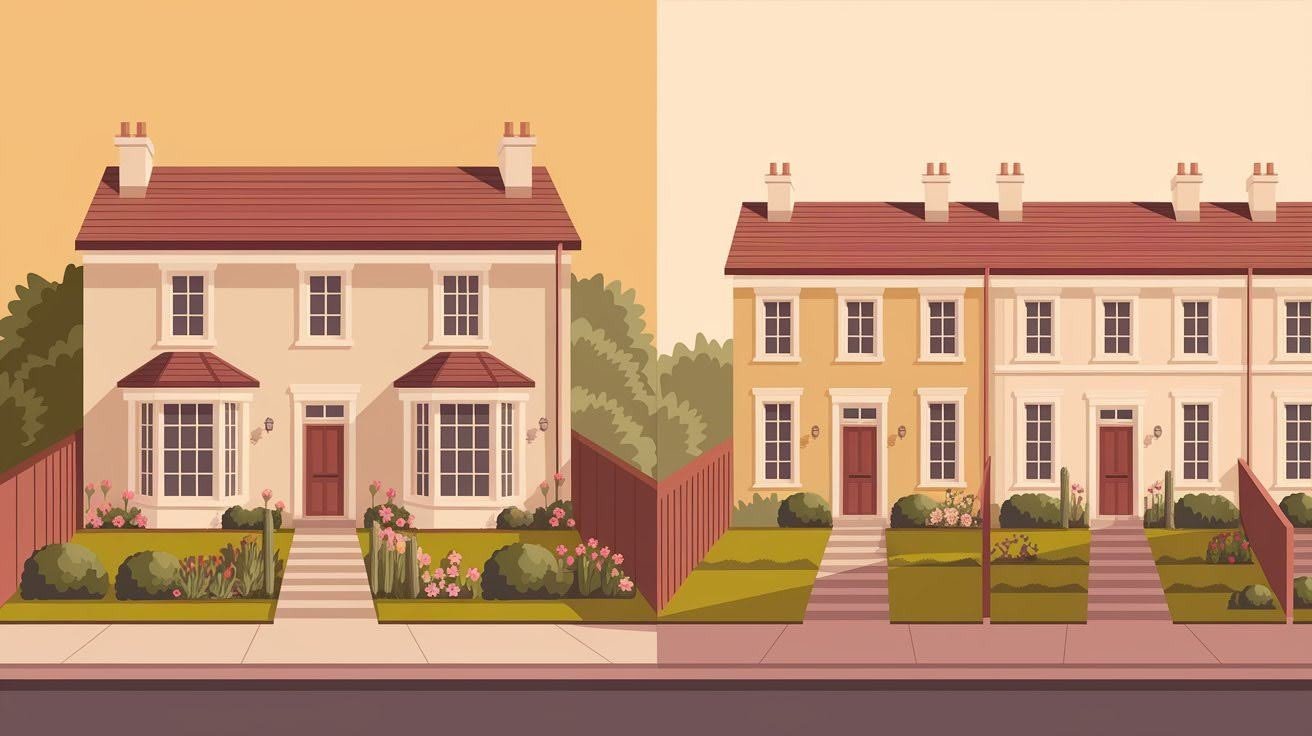
Townhouses typically share walls on both sides unless you get an end unit. They’re often part of larger developments with 4-10 connected homes in a row. Semi-detached homes only connect to one neighbor and usually come in pairs.
This means semi-detached homes offer more privacy and independence than interior townhouse units. You also typically get more yard space and fewer neighbors to coordinate with for maintenance or exterior changes.
Pros of a Semi-Detached House
Affordability
Semi-detached homes typically cost 10-20% less than comparable detached houses in the same neighborhood. You get similar square footage and features while saving thousands on your purchase price.
Unlike condos or townhouses, you won’t pay monthly HOA fees or condo association costs. Your mortgage payment covers everything – no surprise fees for building maintenance, landscaping, or shared amenities you might not use.
Privacy and Space
You get much more privacy than apartment or townhouse living. With only one shared wall and no neighbors above or below, noise issues are minimal in well-built homes.
Most semi-detached houses include private outdoor space like a backyard, patio, or garden area. You can host barbecues, let kids play outside, or grow vegetables without sharing common areas with multiple families.
Energy Efficiency
That shared wall actually helps your utility bills. Your neighbor’s heating helps warm your house in winter, and their cooling helps in summer. Many homeowners see 15-25% savings on heating and cooling costs compared to detached homes.
The connected structure also reduces heat loss through walls, making these homes naturally more energy efficient than standalone houses of similar size.
Ownership Flexibility
Semi-detached homes work great for multigenerational families. You can live in one side while aging parents or adult children occupy the other, maintaining independence while staying close.
They also make excellent rental investments. You can live in one side and rent the other to help with mortgage payments, or rent both sides for steady income. The separate entrances and utilities make tenant management easier than traditional duplexes.
Cons of a Semi-Detached House
Privacy Concerns

Sound can travel through shared walls, especially in older homes built before modern soundproofing techniques. You might hear your neighbor’s TV, music, or conversations, particularly if the wall lacks proper insulation.
Living so close to neighbors isn’t ideal for everyone. Your neighbor’s yard activities, visitors, and lifestyle choices directly affect your daily experience. Some people prefer the complete independence that comes with detached homes.
Design and Maintenance Challenges
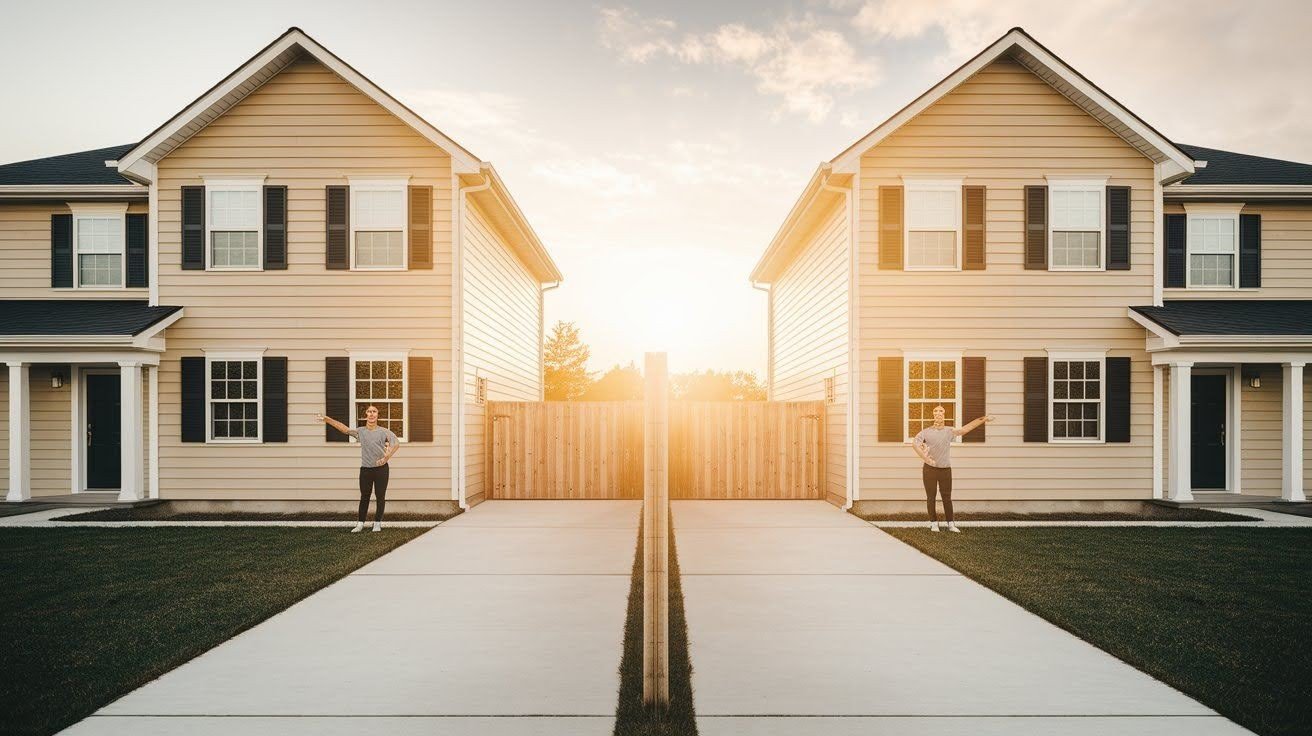
Exterior changes often require coordination with your neighbor to maintain the property’s symmetrical appearance. If you want to change siding color, add shutters, or modify the front entrance, your neighbor might need to agree or make matching changes.
Shared elements like roofs, driveways, or fencing between properties require joint decision-making for repairs or upgrades. This can complicate maintenance timing and create disputes over costs, especially if one owner wants premium materials while the other prefers budget options.
Potential Neighbor Disputes
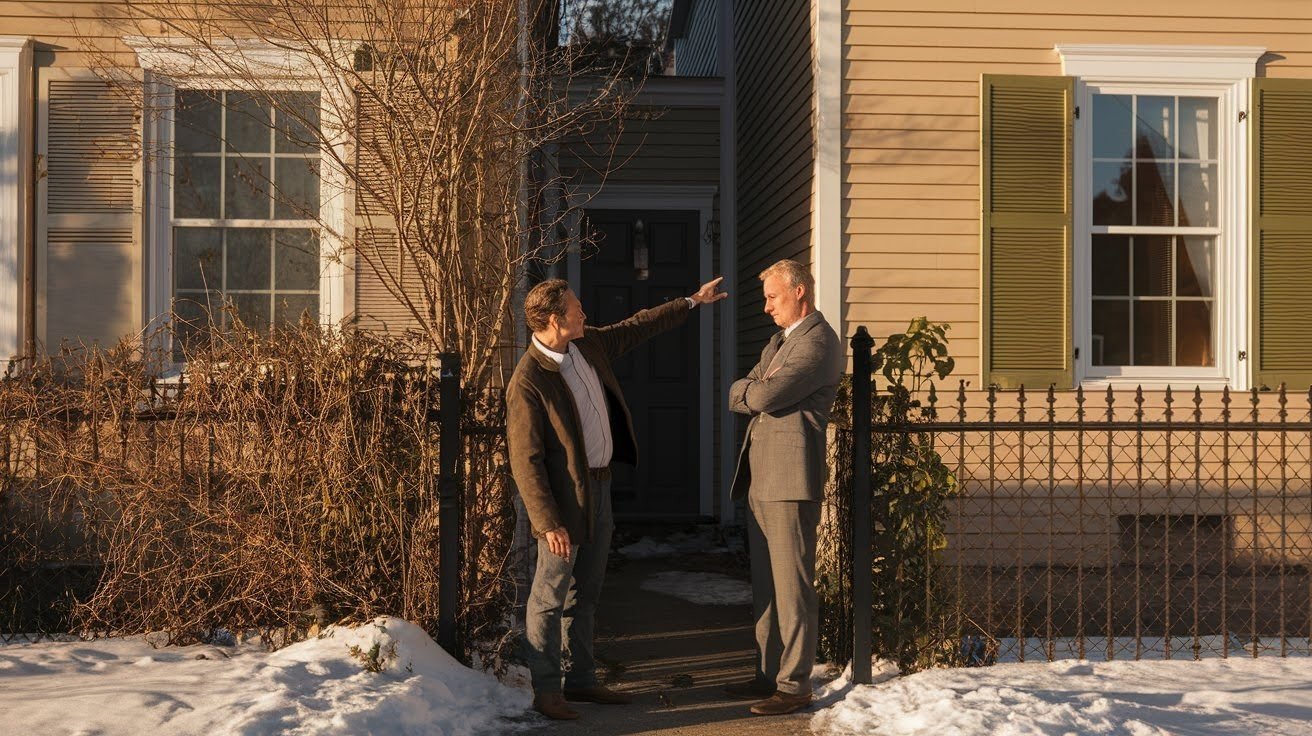
Conflicts can arise over noise levels, property maintenance standards, or who pays for shared repairs. Unlike apartment living where a landlord handles disputes, you’ll need to work things out directly with your neighbor.
Clear agreements about shared responsibilities help, but they’re not always in place when you buy. You might inherit unclear boundaries about fence maintenance, shared driveway use, or snow removal responsibilities that can create ongoing tension with neighbors.
Who Should Consider a Semi-Detached House?
Ideal Buyers

First-time homeowners often find semi-detached houses perfect for breaking into homeownership. The lower price point makes qualifying for mortgages easier while still providing the experience of owning a real house with a yard.
Young families get great value from these homes. You can afford more space for growing kids without stretching your budget to detached home prices. The outdoor space gives children room to play safely.
Investors appreciate semi-detached properties for their rental potential and lower maintenance compared to larger buildings. The separate utilities and entrances make tenant management straightforward, while the lower purchase price improves cash flow.
Builders working with narrow or mid-size urban lots find semi-detached designs maximize the number of homes they can fit while still offering buyers house-like living rather than condo-style units.
Lifestyle Fit
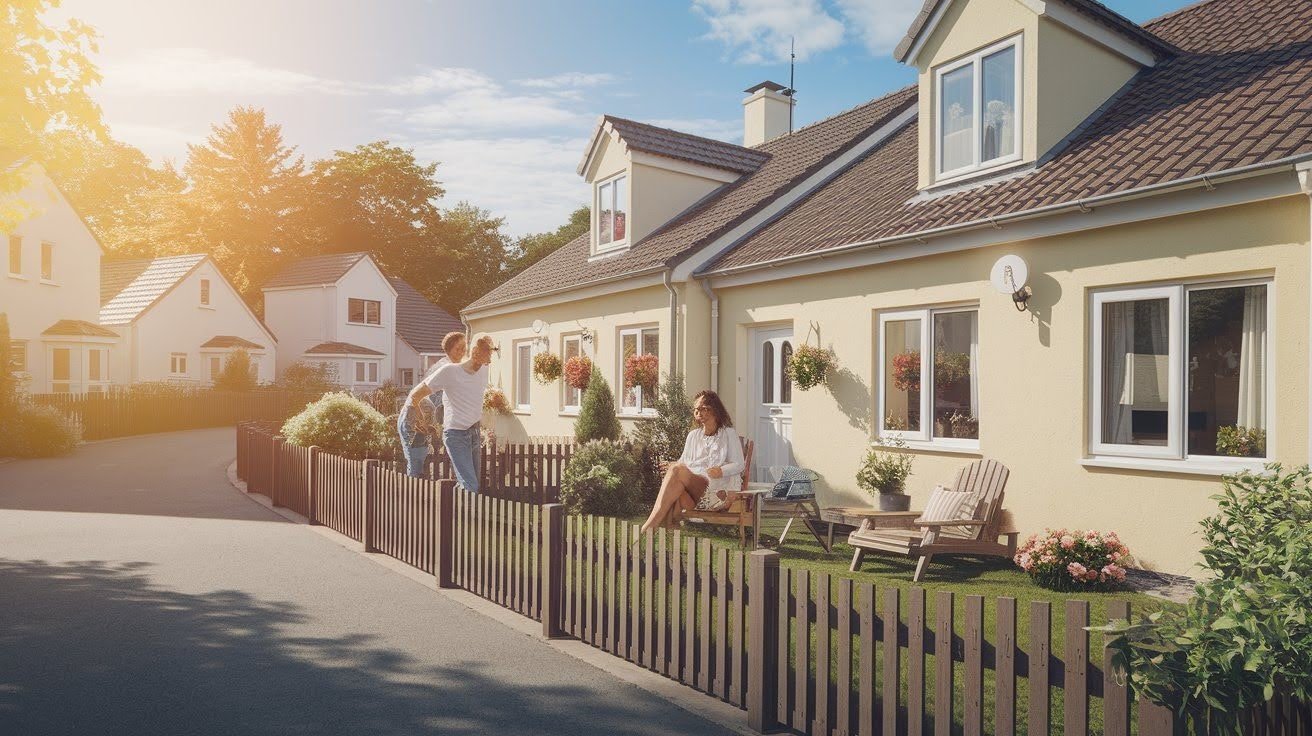
These homes suit people who want community connection without sacrificing privacy. You get friendly neighbor relationships and a sense of belonging while maintaining your own independent space.
Homeowners seeking individual space without high property costs find the perfect balance here. You avoid condo fees and shared decision-making while keeping housing costs reasonable. The arrangement works well for people who want house-style living but don’t need or can’t afford a large detached home.
Tips for Living in or Buying a Semi-Detached House
- Research local zoning laws – Understand what renovations you can make and any restrictions on exterior changes
- Check noise insulation regulations – Verify building codes for sound barriers between units, especially in older homes
- Get written agreements on shared responsibilities – Document who handles roof repairs, driveway maintenance, and fence upkeep
- Review property lines carefully – Know exactly where your property ends and shared areas begin
- Verify insurance covers shared wall damage – Ensure your policy protects against damage from your neighbor’s side
- Check for separate insurance policies – Confirm your neighbor has adequate coverage to protect both properties
- Inspect the shared wall thoroughly – Look for cracks, water damage, or structural issues that affect both units
- Evaluate roof condition on both sides – Shared roofs require coordinated maintenance and repairs
- Test plumbing access points – Ensure you can reach your utilities without entering your neighbor’s property
- Meet your potential neighbors before buying – Get a sense of their maintenance standards and communication style
- Review any existing maintenance agreements – Understand ongoing commitments for shared elements
- Budget for coordinated repairs – Plan for expenses that require joint decision-making with your neighbor
Conclusion
Semi-detached houses offer a practical middle ground between apartment living and detached home ownership. You get more space and privacy than condos while paying less than standalone houses. The shared wall design provides energy savings and community connection without major compromises.
Understanding the pros and cons helps you decide if this housing type fits your lifestyle and budget. Consider factors like noise tolerance, maintenance coordination, and long-term plans when evaluating options.
With proper research, clear neighbor agreements, and realistic expectations, semi-detached homes work well for first-time buyers, growing families, and investors alike. The key is finding the right property in the right neighborhood that matches your specific needs and financial situation.
Frequently Asked Questions
Do I need my neighbor’s permission to renovate my semi-detached house?
Interior renovations typically don’t require neighbor approval, but exterior changes often do. Check your local building codes and property agreements for specific requirements about shared walls and matching appearances.
How much noise can I expect from the shared wall?
Modern semi-detached homes have good soundproofing, so noise is usually minimal with normal living. Older homes may transmit more sound, but proper insulation can significantly reduce noise transfer between units.
Who pays for repairs to the shared wall or roof?
Shared repair costs are typically split between both homeowners, but this varies by local laws and property agreements. Always get written agreements about maintenance responsibilities before purchasing to avoid future disputes.
Are semi-detached houses harder to sell than detached homes?
Semi-detached homes generally sell well due to their affordability and space, though they may take slightly longer than detached homes. Market demand depends on your local area and current housing trends.
Do semi-detached houses have HOA fees like condos?
No, semi-detached houses typically don’t have HOA fees since each owner maintains their own property independently. You only pay for your own utilities, taxes, and maintenance costs.


